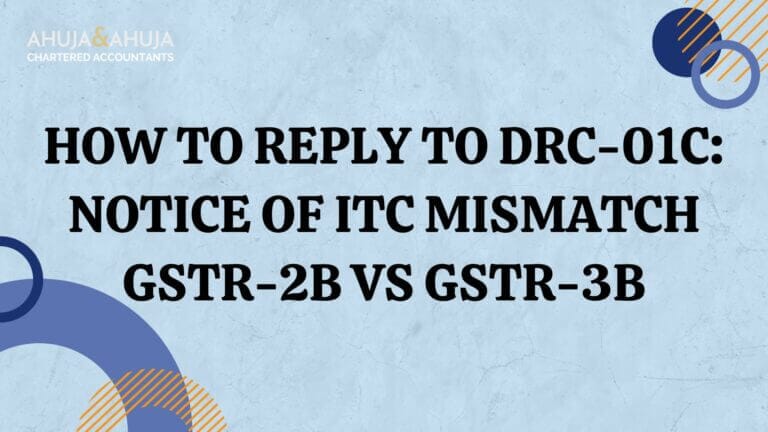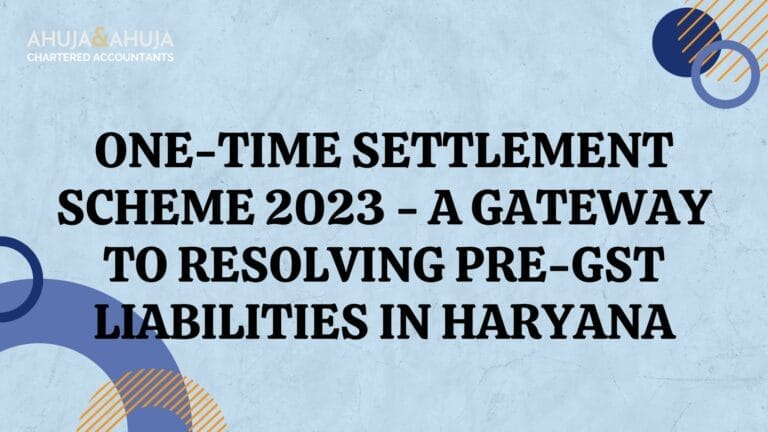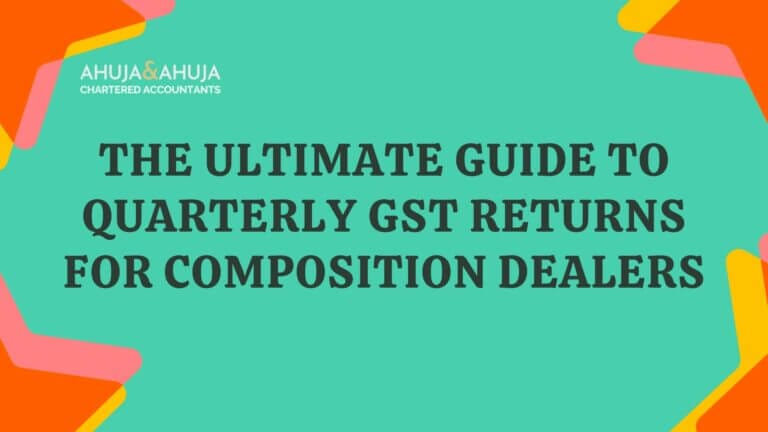Risky Exporters in GST: Your Complete Guide to Procedures, FAQs, and More
In the complex world of international trade, understanding the nuanced roles that exporters play in the economy is vital. A term that often comes up in this context is “risky exporter”.
This designation can significantly impact an exporter’s operations, affecting everything from cash flow to credibility.
In this article, we delve into what it means to be labeled as a risky exporter, the procedures involved, and the broader implications on the Indian economy.
Background
An exporter becomes termed as ‘risky’ primarily when discrepancies or anomalies are observed in their transactions or compliance records.
The Import Export Code (IEC) is essential for any business to enter into international trade. However, when an alert of a risky exporter is invoked on an IEC, it can lead to a series of stringent checks and balances.
What triggers a risky exporter alert?
Based on an aggregate analysis of data related to Goods and Services Tax (GST), Income Tax, and foreign trade transactions, regulatory authorities like the Central Board of Indirect Taxes and Customs (CBIC) identify exporters who may pose a risk to the revenue or compliance landscape.
This identification leads to the immediate cessation of various tax refunds such as Integrated Goods and Services Tax (IGST), duty drawback, and other export-related benefits.
Consequently, every export consignment from the flagged entities is subject to rigorous verification.
The procedure for extension of the period for export realization can significantly impact exporters, particularly if they are under scrutiny, influencing their ability to meet prescribed timelines.
The interruption of these refunds and benefits can create a ripple effect, not just on the businesses involved but also on the broader economic framework.
Exporters play a critical role in the country’s economic health, promoting foreign exchange influx and job creation. When legitimate businesses are mistakenly flagged, the outcomes can be undesirably detrimental.
The mechanism to tag exporters as risky has faced criticism for its lack of transparency and promptness. Many micro, small, and medium enterprise (MSME) exporters have expressed concerns over the methodology used, advocating for a system that is clear, time-bound, and just.
For exporters regularly engaged in GST-exempt supplies, understanding the All About LUT for GST Exporters provides critical insights into compliance without having their financial benefits stalled.
Current Mechanism for Tagging Risky Exporters
Identifying risky exporters is a sophisticated process that utilizes a blend of analytics and compliance data.
The Central Board of Indirect Taxes and Customs (CBIC) plays a crucial role in this assessment through its Directorate General of Analytics and Risk Management (DGARM). The data assessed includes:
- GST Compliance Data: Regularity and accuracy of GST filings and payments.
- Income Tax Returns: Consistency and completeness of income reported and taxes paid.
- Foreign Trade Transactions: Patterns and authenticity of international trade activities.
These layers of data are scrutinized using advanced analytical tools to flag entities that display anomalies or inconsistencies that might indicate potential risk to the fiscal governance or fraud.
Procedure to Manage Risky Exporter Alert
Once an exporter is flagged as risky, a thorough verification process ensues, as mandated by the CBIC.
The process is detailed in various Standard Operating Procedures (SOPs), revised periodically to enhance efficacy and fairness. The steps involved are:
Identification by DGARM: Utilizing risk parameters and data analytics, DGARM identifies potential risky exporters and suppliers.
Alert Creation by RMCC: The Risk Management Centre for Customs (RMCC) receives the list and inputs alerts into the system to track and manage these entities closely.
Customs Examination: Customs officers then conduct detailed examinations of the export consignments of these flagged exporters to verify compliance and authenticity.
Verification by CGST Formations: Concurrently, CGST formations, including Anti-Evasion teams, assess the domestic operations of these exporters. They provide a comprehensive verification report back to DGARM.
Decision on NOC: Based on the reports, DGARM decides on issuing a No Objection Certificate (NOC), essential for lifting the risky tag.
Communication for Revocation: If NOC is granted, the customs department is notified to revoke the alert and release withheld benefits like IGST refunds and drawback.
Review of Continued Monitoring: DGARM may periodically review whether the entities should remain on or be removed from the watch list based on ongoing compliance and risk assessment.
The amendment to CGST Rule 96, effected from July 1st, 2017, stipulates that the withheld IGST refunds can now be considered justified based on such risk-oriented verification.
This adaptation aims to streamline the process and make it more aligned with real-time risk assessment frameworks.
The recent instructional changes and the introduction of a more data-centric approach in the latest amendments highlight an evolution towards a more dynamic and responsive regulatory environment, aiming to balance stringent monitoring with fair trade facilitation.
Challenges Faced by Exporters
Being labeled as a risky exporter can have severe consequences for legitimate businesses erroneously caught in the dragnet of risk assessments.
The challenges these exporters face include:
- Delayed Refunds: With IGST, drawback, and other monetary benefits withheld, cash flow problems are a common outcome, impacting the exporters’ ability to operate effectively.
- Administrative Burden: The need to comply with additional verifications, documentation, and checks adds significant operational overheads.
- Verification Processes: The lengthy verification processes can become a roadblock, delaying regular business activities and potentially tarnishing business reputation.
- Negative Reports: A negative report from the division officer can lead to further lengthy verification processes, exacerbating the situation.
These challenges underline the delicate balance that must be maintained between protecting the fiscal framework of the country and supporting the fluid operation of genuine exporters.
Proposed Improvements and Current Actions
To address the aforementioned challenges, various stakeholders have proposed enhancements to make the process more transparent and equitable:
- Time-Bound Verifications: Introducing strict timelines to complete verification processes to minimize disruption to business operations.
- Transparent Criteria: Clear, publicly available criteria for flagging exporters as risky can help in ensuring fairness and allow businesses to comply proactively.
- Regular Updates and Feedback: Providing regular updates to exporters under scrutiny and allowing them feedback mechanisms can help in ensuring that the processes remain interactive and fair.
- Appeals Process: Establishing a robust appeals process where exporters can contest their risky designation supported by evidence can ensure due process.
Furthermore, consistent feedback from the exporting community has inspired some action. For example, CBIC’s Instruction no 04/2022 and various advisories attempt to streamline and clarify the process.
Though these are steps in the right direction, continuous improvements and updates are necessary to ensure that compliance does not stymie genuine export activities.
The need for a formal and transparent communication strategy from the department, detailing why an alert was placed, has also been acknowledged.
This can prevent misunderstandings and provide exporters the opportunity to rectify discrepancies proactively.
Frequently Asked Questions (FAQs)
What is a risky exporter?
- A risky exporter is an entity flagged by regulatory authorities due to discrepancies or anomalies in their transaction or compliance records that may indicate potential risks like fraud or significant non-compliance.
What happens when an exporter is flagged as risky?
- The refunds such as IGST and drawback are stopped, all export consignments are subject to intense verification, and the exporter may face significant delays and administrative burdens until the alert is resolved.
How can an exporter clear their name from the risky exporter list?
- The exporter must comply with the verification process initiated by customs and GST authorities, provide all required documents and information, and if deemed compliant, a No Objection Certificate (NOC) will be issued to lift the alert.
What are the rights of an exporter if they are mistakenly tagged as risky?
- Exporters have the right to be informed about the specific reasons for being flagged, access a transparent review process, and receive timely updates on their case. They can also appeal against the decision if they have sufficient evidence to prove their compliance.
How long does the verification process take?
- The duration can vary based on individual cases, but with the newly proposed time-bound verification processes, it aims to be quicker than before. Exporters are encouraged to cooperate fully to expedite the process.
Who can an exporter contact for assistance during this process?
- Exporters can reach out to their jurisdictional CGST and Customs offices. Legal advisers and consultants familiar with export regulations and compliance can also provide valuable assistance.
Final Words: Risky Exporter in GST
Understanding the implications of being flagged as a risky exporter is crucial for all entities engaged in international trade.
While the system aims to safeguard economic interests by preventing fraudulent practices, it is essential that it also supports the uninterrupted operation of compliant businesses.
Ongoing revisions to the processes, as well as feedback from stakeholders, are key to achieving a balanced and fair trade environment.
Calls to Action
- Stay Informed: Regularly review updates from CBIC and related regulatory bodies to ensure you are compliant with the latest export regulations and processes.
- Seek Clarity: If flagged as a risky exporter, promptly contact the relevant authorities for detailed reasons and comply with the verification process.
- Consult Professionals: Engage with legal and trade consultants to navigate the complexities of export regulations effectively. For more information, consider resources like procedural guidelines on extending the period for export realization and utilizing LUT for GST efficiently.
Disclaimer
The materials provided herein are solely for educational and informational purposes. No attorney/professional-client relationship is created when you access or use the site or the materials. The information presented on this site does not constitute legal or professional advice and should not be relied upon for such purposes or used as a substitute for professional or legal advice.







